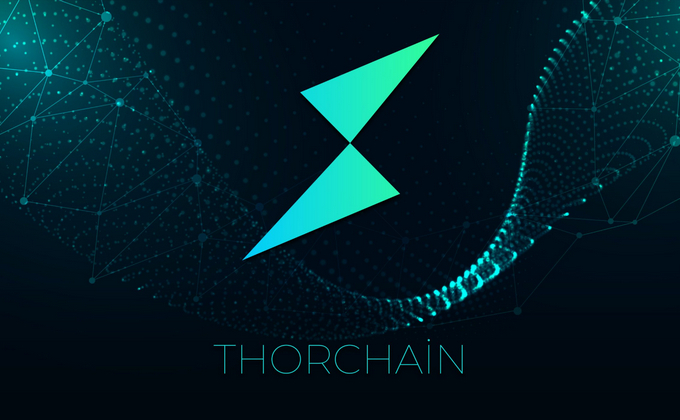-
 Bitcoin
Bitcoin $103,410.2943
0.37% -
 Ethereum
Ethereum $2,378.4102
1.71% -
 Tether USDt
Tether USDt $1.0000
0.02% -
 XRP
XRP $2.3798
-0.46% -
 BNB
BNB $653.3515
2.58% -
 Solana
Solana $169.3667
-2.03% -
 USDC
USDC $0.9999
-0.01% -
 Dogecoin
Dogecoin $0.2232
7.41% -
 Cardano
Cardano $0.7915
-0.27% -
 TRON
TRON $0.2592
-1.84% -
 Sui
Sui $3.8789
-2.59% -
 Chainlink
Chainlink $16.0918
-0.95% -
 Avalanche
Avalanche $24.0713
2.17% -
 Stellar
Stellar $0.2998
-0.60% -
 Shiba Inu
Shiba Inu $0.0...01564
3.07% -
 Hedera
Hedera $0.2049
1.60% -
 Hyperliquid
Hyperliquid $25.1726
0.08% -
 Toncoin
Toncoin $3.3417
1.68% -
 Bitcoin Cash
Bitcoin Cash $416.5211
0.31% -
 UNUS SED LEO
UNUS SED LEO $8.7409
0.13% -
 Polkadot
Polkadot $5.0542
7.79% -
 Litecoin
Litecoin $101.3278
3.08% -
 Monero
Monero $318.6128
4.89% -
 Bitget Token
Bitget Token $4.7713
6.21% -
 Pepe
Pepe $0.0...01275
0.19% -
 Dai
Dai $0.9999
0.00% -
 Pi
Pi $0.7199
-3.05% -
 Ethena USDe
Ethena USDe $1.0001
0.00% -
 Uniswap
Uniswap $6.5661
3.44% -
 Bittensor
Bittensor $437.0510
1.73%
What is RUNE coin
THORChain leverages its native coin, RUNE, to facilitate cross-chain liquidity and non-custodial trading, empowering users with control over their assets and seamless swaps across multiple blockchains.
Nov 07, 2024 at 09:24 am

What is THORChain (RUNE) Coin?
THORChain is a decentralized liquidity network that enables the trading of cryptocurrencies across multiple blockchains without the need for intermediaries. Built on its native coin, RUNE, THORChain aims to provide a scalable, non-custodial, and censorship-resistant platform for cross-chain liquidity and trading.
Key Features of THORChain:
- Cross-Chain Liquidity: THORChain connects multiple blockchains, allowing users to swap assets between different networks seamlessly.
- Non-Custodial and Decentralized: Users maintain control over their assets throughout the trading process, eliminating counterparty risks and the need for intermediaries.
- Efficient and Cost-Effective: Optimized routing algorithms ensure efficient trading execution and minimize transaction fees.
Why RUNE Coin Matters:
RUNE serves as the backbone of the THORChain ecosystem and plays crucial roles in its functionality:
- Governance: RUNE holders can participate in network governance, vote on proposals, and influence the protocol's development.
- Bonding and Liquidity Provision: RUNE is used as a means of bonding to provide liquidity to the network, earning rewards and contributing to the platform's stability.
Technological Innovations Behind RUNE:
- ChaosNet: A proprietary and energy-efficient consensus mechanism that enhances scalability and security.
- Binary Swaps: A decentralized asset exchange mechanism that facilitates cross-chain trading without the need for intermediary wrapping or bridging processes.
- Pool-Based Design: THORChain employs autonomous liquidity pools to match buyers and sellers, maximizing liquidity efficiency.
Challenges and Future of THORChain:
- Transaction Speed: While cross-chain transactions offer increased security, they can take longer than on-chain swaps. THORChain is actively working on optimizing its transaction speeds.
- Ecosystem Development: The expansion of the THORChain ecosystem, including integrations with more wallets and protocols, is crucial for its wider adoption.
- Regulatory Environment: Clear regulatory frameworks for decentralized exchanges and cross-chain transactions are necessary for the industry's growth.
Conclusion:
THORChain has emerged as a groundbreaking solution for cross-chain liquidity and trading in the cryptocurrency space. Its native coin, RUNE, plays a vital role in the platform's governance, bonding, and liquidity provision. Despite some challenges, THORChain continues to develop its technology and expand its ecosystem, positioning it as a promising player in the future of decentralized finance.
Disclaimer:info@kdj.com
The information provided is not trading advice. kdj.com does not assume any responsibility for any investments made based on the information provided in this article. Cryptocurrencies are highly volatile and it is highly recommended that you invest with caution after thorough research!
If you believe that the content used on this website infringes your copyright, please contact us immediately (info@kdj.com) and we will delete it promptly.
- Rexas Finance (RXS) Raises Over $48 Million in Presale, Tokenizing Real-World Assets to Open New Markets
- 2025-05-10 19:50:13
- The crypto market may be entering the early stages of a new altcoin season, according to analysts.
- 2025-05-10 19:50:13
- Bitcoin (BTC) Price Surges to $104,300, Confirming Uptrend and Solidifying Bullish Outlook
- 2025-05-10 19:45:12
- Bitcoin (BTC) Price Surges to $104,300, Confirming the Uptrend and Solidifying the Bullish Outlook Projected for 2025
- 2025-05-10 19:45:12
- SUI Has Experienced an Impressive Price Rally, Rising Nearly 20% in Just Two Days
- 2025-05-10 19:40:15
- Encapsulate Joins the IOTA Ecosystem as a New Validator
- 2025-05-10 19:40:15
Related knowledge

What is Ethereum’s Slashing mechanism and how to punish malicious behavior?
Feb 20,2025 at 03:08am
Key PointsOverview of slashingDifferent types of slashing in EthereumIncentives and consequences of slashingIdentifying and reporting slashed validatorsOngoing discussions and potential improvementsEthereum's Slashing Mechanism: Punishing Malicious BehaviorEthereum's slashing mechanism is an essential tool for ensuring network security and punishing mal...

What is the verifier node of Ethereum and how to become a verifier?
Feb 19,2025 at 06:00pm
The Verifier Node of Ethereum: A Comprehensive GuideKey Points:What is a Verifier Node?How to Become a Verifier NodeResponsibilities and Rewards of a Verifier NodeMinimum Requirements for Becoming a Verifier NodePotential Difficulties in Running a Verifier Node1. What is a Verifier Node?A Verifier Node is an independent entity on the Ethereum network th...

What is Ethereum’s staking, and how to participate and earn money?
Feb 19,2025 at 04:37pm
Key Points:Understanding Ethereum's Staking MechanismSteps to Participate in StakingBenefits and Rewards of StakingSecurity and Risk ConsiderationsTechnical Requirements and Hardware OptionsPotential Challenges and Troubleshooting TipsFAQs on Ethereum StakingWhat is Ethereum's Staking?Proof-of-Stake (PoS) is a consensus mechanism used in blockchain netw...

What is Ethereum’s DAO (Decentralized Autonomous Organization) and how does it work?
Feb 20,2025 at 03:12am
Key PointsDefinition and Structure of a DAOGovernance and Decision-Making in DAOsBenefits and Use Cases of DAOsChallenges and Limitations of DAOsWhat is Ethereum's DAO (Decentralized Autonomous Organization) and How Does It Work?Definition and Structure of a DAOA Decentralized Autonomous Organization (DAO) is an innovative governance and management fram...

What is Ethereum's multi-signature wallet and how to improve security?
Feb 20,2025 at 02:18pm
Key Points:Understanding the Concept of a Multi-Signature WalletBenefits and Drawbacks of Multisig WalletsRequirements for Setting Up a Multisig WalletStep-by-Step Guide to Generating a Multisig WalletImplementing Strategies for Enhanced Security1. Understanding the Concept of a Multi-Signature WalletA multi-signature (multisig) wallet in the Ethereum e...

What is Ethereum's oracle and how to provide data for smart contracts?
Feb 21,2025 at 01:30am
Key Points:Understanding the concept of oracles in EthereumExploring different types of oraclesDetailed guide on how to provide data for smart contractsAddressing potential challenges and considerationsWhat is Ethereum's Oracle?Oracles are crucial components in the Ethereum ecosystem, enabling smart contracts to access real-world data and off-chain even...

What is Ethereum’s Slashing mechanism and how to punish malicious behavior?
Feb 20,2025 at 03:08am
Key PointsOverview of slashingDifferent types of slashing in EthereumIncentives and consequences of slashingIdentifying and reporting slashed validatorsOngoing discussions and potential improvementsEthereum's Slashing Mechanism: Punishing Malicious BehaviorEthereum's slashing mechanism is an essential tool for ensuring network security and punishing mal...

What is the verifier node of Ethereum and how to become a verifier?
Feb 19,2025 at 06:00pm
The Verifier Node of Ethereum: A Comprehensive GuideKey Points:What is a Verifier Node?How to Become a Verifier NodeResponsibilities and Rewards of a Verifier NodeMinimum Requirements for Becoming a Verifier NodePotential Difficulties in Running a Verifier Node1. What is a Verifier Node?A Verifier Node is an independent entity on the Ethereum network th...

What is Ethereum’s staking, and how to participate and earn money?
Feb 19,2025 at 04:37pm
Key Points:Understanding Ethereum's Staking MechanismSteps to Participate in StakingBenefits and Rewards of StakingSecurity and Risk ConsiderationsTechnical Requirements and Hardware OptionsPotential Challenges and Troubleshooting TipsFAQs on Ethereum StakingWhat is Ethereum's Staking?Proof-of-Stake (PoS) is a consensus mechanism used in blockchain netw...

What is Ethereum’s DAO (Decentralized Autonomous Organization) and how does it work?
Feb 20,2025 at 03:12am
Key PointsDefinition and Structure of a DAOGovernance and Decision-Making in DAOsBenefits and Use Cases of DAOsChallenges and Limitations of DAOsWhat is Ethereum's DAO (Decentralized Autonomous Organization) and How Does It Work?Definition and Structure of a DAOA Decentralized Autonomous Organization (DAO) is an innovative governance and management fram...

What is Ethereum's multi-signature wallet and how to improve security?
Feb 20,2025 at 02:18pm
Key Points:Understanding the Concept of a Multi-Signature WalletBenefits and Drawbacks of Multisig WalletsRequirements for Setting Up a Multisig WalletStep-by-Step Guide to Generating a Multisig WalletImplementing Strategies for Enhanced Security1. Understanding the Concept of a Multi-Signature WalletA multi-signature (multisig) wallet in the Ethereum e...

What is Ethereum's oracle and how to provide data for smart contracts?
Feb 21,2025 at 01:30am
Key Points:Understanding the concept of oracles in EthereumExploring different types of oraclesDetailed guide on how to provide data for smart contractsAddressing potential challenges and considerationsWhat is Ethereum's Oracle?Oracles are crucial components in the Ethereum ecosystem, enabling smart contracts to access real-world data and off-chain even...
See all articles























































































